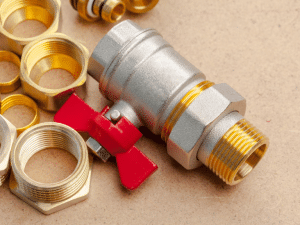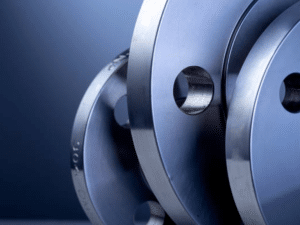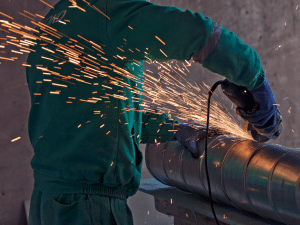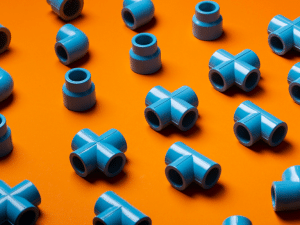High Pressure Ball Valve Maintenance Tips from Expert Suppliers
Buying the correct valve is one thing—keeping it working like it should is another. Many experienced floating ball valve suppliers will tell you that maintenance isn’t just recommended, it’s essential. These valves take on some tough jobs in high-pressure systems; they can wear out quickly without regular care. The good news? With attention and the right approach, you can ensure your high-pressure ball valves perform reliably for years.
Understanding High-Pressure Ball Valves
High-pressure ball valves control the flow of liquids or gases in extreme-pressure applications. The valve has the ball—a spherical disc with a hole in the center—that aligns with the flow path to the system when open and blocks it when closed.
There are two common types:
- Floating Ball Valves – The ball is not anchored but held in place with a set of seats. As the pressure increases, the ball presses down towards the downstream seat and forms a seal by pushing into the seat.
- Trunnion-Mounted Valves – This type can be used in very high-pressure applications and as well has additional mechanical features to anchor the ball.
Experienced floating ball valve suppliers have found that floating ball valves are more commonly applied in mid- to high-pressure applications, compared to trunnion-mounted balls, as they are generally cheaper, more compact, and provide reliable seal performance.
Why Maintenance is Critical
Regardless of the valve’s toughness, it can fail without ongoing maintenance. High pressure increases wear and tear, especially in seals, seats, and stems. Dirt, contamination, or residues could lower efficiency or pose safety hazards.
The manufacturers of high-pressure ball valves and suppliers identify the following potential outcomes of neglecting the valve’s maintenance plan:
- Internal or external leakage
- Valve seizing or complex operation
- Inaccurate flow controls
- Expensive system failure
Regular maintenance keeps your valves safe, efficient, and long-lasting.
Expert Maintenance Tips from Top Suppliers
Leading floating ball valve suppliers offer these recommendation to maintain your floating ball valve and keep your system operating smoothly.
Routine Cleanliness:
Keep the valve surface clean by using a soft bristle brush or cloth to carefully sweep dirt off the valve surface; if the valve handles corrosive fluids, rinse with an appropriate solvent.
Lubricate, But Carefully:
Not all lubricants are equal. Utilize only manufacturer-specified lubricants. Using an unacceptable lubricant can cause seal damage or react with the fluid flowing through the valve.
Check for Seal Wear:
Look for wear on the seats, seals, or O-rings (for example, cracking or flattening). Replace worn parts before they create internal leaks.
Operate the Valve Periodically:
To prevent valve seize, do not allow the valve to remain inactive for months at a time; open or close the valve regularly to ensure it rotates.
Conduct Pressure Tests:
After reinstallation or cleaning, perform a pressure test to check for leaks and confirm proper sealing and performance.
Following these instructions will help you avoid costly replacements and minimize unplanned downtime. Some high-pressure ball valve suppliers offer holder valves and maintenance kits for individual valve models.
Common Mistakes to Avoid
By avoiding common mistakes, you will save time and money. Below are some of the most often overlooked maintenance mistakes:
- Forcing the Handle: Never use any tool to force a stuck valve, which may damage internal components.
- Using Incompatible Cleaners: Some cleaners may be so harsh that they may damage the valve material itself – always check for compatibility.
- Ignoring Minor Leaks: A small leak can be a minor and major warning sign – fix it before problems escalate into major issues.
- Over-lubricating: Too much grease can accumulate dirt and debris within the lubricated areas – this can clog the moving parts.
Floating ball valve suppliers always recommend reading the product manual before any service work is attempted.
Expert Advice: When to Repair vs. Replace
Knowing when to fix a valve and replace it saves time and budget. Here’s a quick breakdown:
Repair the valve if:
- You notice slow movement or minor leaks
- Seals are worn, but the valve body is intact
- There’s a buildup of dirt or scale, but no corrosion
Replace the valve if:
- The valve body is cracked or corroded
- It fails pressure tests despite multiple repairs
- There’s ongoing leakage from the body or stem
Top manufacturers of high-pressure ball valves and suppliers often offer inspections or testing services to help you make the right call. Some even offer trade-in discounts when replacing outdated units.
Choosing a Reliable Supplier for Maintenance Support
Working with an experienced supplier is not just about the transaction, but about getting long-term support. A partner who helps you understand the correct methodologies for maintenance, who brings forth good quality replacement parts with maximum efficiency, and provides technical advice when you need it.
When selecting a valve supplier, look for:
- Industry Experience: Suppliers like JSS Pipes have a long-standing reputation in the industrial sector.
- Support Services: The best floating ball valve suppliers assist with diagnostics, on-site maintenance guidance, and valve selection.
- Availability of Parts: Fast access to genuine spares is crucial for efficient repairs.
- Product Knowledge: They should offer insights on installation, pressure ratings, and optimal usage conditions.
A dependable supplier is a valuable partner in keeping your operations safe and cost-effective.
Stay Ahead of Failures—Maintain, Don’t Just Replace
Valve maintenance isn’t a big commitment—you must apply consistent routine maintenance with reliable guidance. Most floating ball valve suppliers say cleaning, verifying lubrication type, and checking for leaks can save you from unwanted expenses. To avoid the obvious pitfalls, study the tips from the experts, and you should rely on reputable suppliers to help you maximize your valve systems. And when in doubt, don’t be afraid to ask the professionals—the advice may make a difference.
FAQs
How often should high-pressure ball valves be inspected?
It’s recommended to inspect valves every three to six months, depending on usage and the type of media handled. Harsh environments may require more frequent checks.
What are the common signs that a high-pressure ball valve needs maintenance?
Stiff operation, leaks, irregular flow, or visible wear on seals and seats are common warning signs. If the valve doesn’t shut off completely, it’s time to inspect.
Can I use any lubricant for high-pressure ball valves?
No. Always use a lubricant compatible with the valve’s materials and media. Floating ball valve suppliers usually suggest specific products for their valves.
What causes leakage in high-pressure ball valves?
Leakage often results from worn-out seals, improper installation, or corrosion inside the valve. Regular cleaning and seal replacement can prevent this.
When should I replace vs. repair a high-pressure ball valve?
If the valve body is cracked or leakage continues after repairs, it’s safer to replace it. For minor issues like clogged passages or worn seals, repair is usually sufficient.







